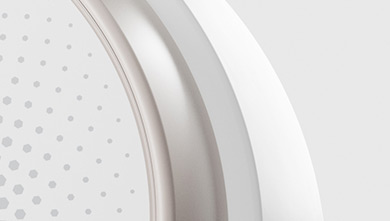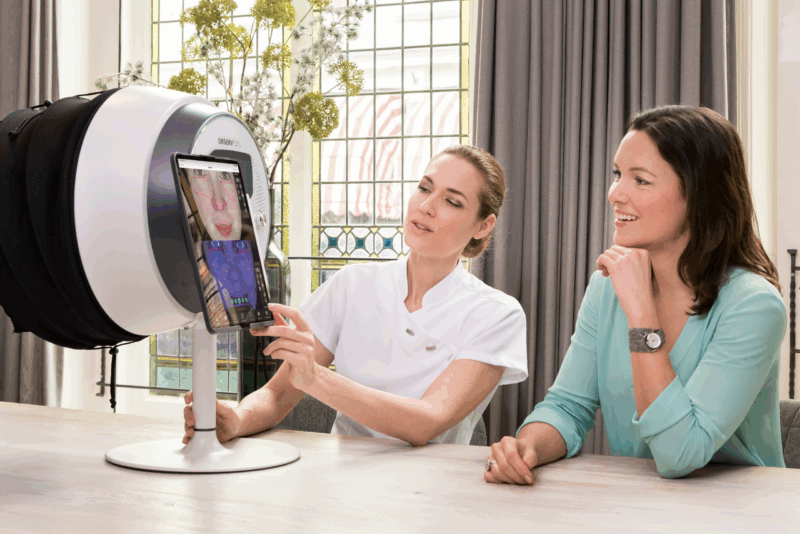The Challenge of Skepticism in Aesthetics
Imagine this: A potential client sits across from you, arms crossed, eyebrows raised in doubt. They’ve heard countless promises before—miracle creams, revolutionary treatments, transformative procedures—only to see minimal results and lighter wallets. “I’ve tried everything,” they say with a weary sigh. “Nothing really works for me.”
Sound familiar? In the aesthetics industry, skepticism isn’t just common—it’s practically an epidemic. But what if you could transform that doubt into unwavering confidence by simply showing rather than just telling?
Visual proof has become the ultimate game-changer in client conversion, offering objective, undeniable evidence that cuts through skepticism like a scalpel. And nowhere is this more powerful than in summer skin analysis, where hidden damage and seasonal concerns become visible challenges that clients can finally see—and truly understand—for themselves.
Understanding the Skeptical Client
The Roots of Doubt
Client skepticism doesn’t appear out of nowhere. It’s often cultivated through years of disappointing experiences: over-promising beauty brands, ineffective treatments that failed to deliver, and practitioners who made claims without solid evidence. Add to this the overwhelming flood of misinformation on social media and the pressure of unrealistic beauty standards, and you have clients who approach aesthetic treatments with a healthy—if sometimes frustrating—skepticism.
Many clients have also faced the disappointment of treatments that promised dramatic visible results but delivered changes so subtle they felt imaginary. Without concrete evidence of improvement, even effective treatments can feel like expensive placebos.
The Psychology of Seeing
The human brain is wired to trust visual information above all else—it’s why the phrase “seeing is believing” resonates so deeply. When clients can see objective, quantifiable evidence of their skin concerns, something profound happens: skepticism transforms into understanding, and understanding paves the way for commitment.
Visual evidence doesn’t just show clients what’s wrong; it demonstrates that you possess the expertise and technology to identify problems they couldn’t see themselves. This positions you not as just another salesperson making promises, but as a skilled professional armed with scientific precision.
The Role of Advanced Skin Analysis Technology
Beyond Surface-Level Assessment
Advanced skin analysis devices like Sylton’s Observ systems and VISIA technology have truly revolutionized how we diagnose and present skin concerns. These sophisticated tools peer beneath the surface, revealing hidden damage, underlying inflammation, and developing issues that won’t become visible to the naked eye for months or even years.
Under specialized lighting conditions, these devices capture detailed images showing:
- UV damage and sun spots that haven’t yet surfaced
- Vascular conditions and rosacea that may be subclinical
- Texture irregularities and early signs of aging
- Pigmentation patterns and melasma development
- Pore structure and sebaceous activity
- Hydration levels across different facial zones
The Technology Behind the Insight
Modern skin analysis systems employ multiple light sources and imaging techniques to create comprehensive skin profiles. Cross-polarized light eliminates surface reflection to reveal subsurface conditions, while UV photography exposes damage invisible under normal lighting. Specialized filters can highlight bacterial activity, blood flow patterns, and pigment distribution with remarkable precision.
The quantitative nature of this data transforms subjective assessments into objective measurements. Instead of saying “your skin looks a bit dehydrated,” you can present concrete hydration scores, pigmentation percentages, and comparative analyses that leave no room for doubt.
Benefits for the Modern Practitioner
For aesthetic professionals, advanced skin analysis serves multiple purposes. It enhances diagnostic accuracy, allowing for more targeted and effective treatment protocols. It provides clear documentation for tracking progress over time, creating compelling before-and-after narratives. Perhaps most importantly, it builds immediate credibility and trust with clients who can see—literally—that you possess sophisticated tools and expertise. For more insights into professional development, consider resources from organizations like the Associated Skin Care Professionals (ASCP) or the National Coalition of Estheticians Association (NCEA).
Implementing Visual Proof in Your Summer Skin Analysis
Setting the Stage: Pre-Analysis Consultation
Before diving into the analysis, prepare your clients for what they’re about to experience. Explain that you’ll be using advanced technology to examine their skin in ways impossible with the naked eye. Set the expectation that they may discover issues they weren’t aware of—frame this as an opportunity rather than a problem.
“Today, we’re going to get a complete picture of your skin,” you might say. “This technology will reveal what your summer activities have done to your skin, both the visible effects and the hidden damage that’s still developing beneath the surface.”
The Analysis Session: Engaging Through Discovery
The analysis session should feel like a collaborative exploration rather than a clinical examination. Position the screen so clients can see everything you’re seeing. Guide them through each image, pointing out specific areas of concern with the objectivity that only technology can provide.
Highlighting Problems with Precision
Instead of general statements about sun damage, point to specific UV spots and explain their significance. “See these darker areas under the UV light? These represent accumulated sun damage from this summer’s activities. They’re not visible yet under normal lighting, but they will be within the next six months if we don’t address them now.”
Revealing Hidden Damage
Summer skin often harbors invisible damage that makes for compelling visual proof. UV photography can reveal sun damage that won’t surface for months, while polarized light exposes dehydration patterns and texture issues that explain client complaints about “dull” or “tired-looking” skin.
“This is fascinating,” you might say while examining UV imagery. “You mentioned that your skin seems different after your beach vacation last month. Look at this—we can actually see the cellular damage from that UV exposure, even though it’s not visible yet under normal lighting.”
Post-Analysis Discussion: From Data to Action
The analysis data becomes meaningless without proper interpretation and application. This is where your expertise transforms impressive technology into actionable insights.
Tailoring Recommendations with Visual Evidence
Use the analysis results to justify every treatment recommendation. If the imaging shows dehydration in specific facial zones, recommend targeted hydrating treatments for those exact areas. If UV photography reveals sun damage, present antioxidant therapies and SPF protocols with the visual evidence to support their necessity.
“Based on what we’re seeing here,” you can confidently state, “I recommend starting with a series of hydrating treatments for these specific areas where we detected moisture loss, followed by targeted pigmentation therapy for these UV-damaged zones.”
Demonstrating Future Improvements
Some analysis systems offer simulation capabilities that can project potential improvements from recommended treatments. While these should be presented as estimates rather than guarantees, they provide powerful visual motivation for skeptical clients.
The Ultimate Proof: Before-and-After Comparisons
Nothing converts skeptics like documented improvement over time. Use the same analysis technology to track progress, creating compelling before-and-after presentations that showcase treatment efficacy with scientific precision.
Document not just visible improvements, but quantifiable changes in hydration scores, pigmentation levels, and texture measurements. This objective progress tracking transforms client testimonials from subjective opinions into documented case studies.
Summer Skin Concerns Through a Visual Analysis Lens
Common Summer Skin Challenges
Summer brings unique skin challenges that visual analysis can identify and quantify with remarkable precision. Understanding these seasonal concerns through the lens of advanced imaging helps both practitioners and clients appreciate the full scope of summer’s impact on skin health.
Sun Damage: The Hidden Epidemic
UV photography reveals the true extent of summer sun exposure, often shocking clients who believed their SPF routine was adequate. The technology can quantify UV damage accumulation and predict future pigmentation development, making SPF recommendations feel urgent rather than routine. For more information on sun protection and skin health, consult resources from the American Academy of Dermatology (AAD).
Dehydration: Beyond Surface Dryness
Summer heat and air conditioning create complex dehydration patterns that surface examination might miss. Advanced analysis can identify specific zones of moisture loss and correlate them with environmental factors, lifestyle habits, and product usage patterns.
Breakout Patterns: Identifying Triggers
Increased sweating, sunscreen usage, and travel during summer months often trigger breakouts that seem mysterious to clients. Visual analysis can identify congestion patterns, bacterial activity, and sebaceous changes that explain sudden skin eruptions.
Hyperpigmentation: Tracking the Invisible
Melasma and post-inflammatory hyperpigmentation often worsen during summer months, but early-stage changes remain invisible to conventional assessment. Specialized imaging can detect pigmentation development in its earliest stages, allowing for preventive intervention.
Visual Analysis Applications for Summer Concerns
Each summer skin concern benefits from specific analysis protocols that provide targeted visual evidence for treatment recommendations.
For sun damage, UV photography combined with pigmentation mapping creates undeniable evidence of UV exposure effects. Clients can see exactly how their summer activities translate into cellular damage, making sunscreen recommendations feel personal and urgent.
Dehydration analysis involves hydration mapping across facial zones, often revealing surprising patterns that explain client complaints about skin that “feels different” after summer activities. The objective data supports specific hydrating treatment protocols and product recommendations.
Breakout analysis can identify bacterial activity, pore congestion, and sebaceous patterns that explain summer skin eruptions. This visual evidence helps clients understand that their breakouts aren’t random but rather predictable responses to environmental and lifestyle factors.
For hyperpigmentation concerns, progressive imaging can track pigment development over time, showing clients how seasonal changes affect their skin and demonstrating treatment efficacy with objective measurements.
Building Trust and Loyalty Through Transparency
Empowering Clients with Knowledge
Visual proof does more than just justify treatment recommendations—it educates clients about their skin in ways that create lasting engagement. When clients understand their skin through objective analysis, they become active participants in their skincare journey rather than passive recipients of treatments.
This educational approach transforms the client-practitioner relationship from transactional to collaborative. Clients who understand their skin through visual evidence are more likely to follow through with treatment protocols, maintain recommended routines, and return for ongoing care.
Fostering Long-Term Relationships
Trust built through visual proof creates clients for life. When clients see documented improvement through objective measurements, they develop confidence not just in specific treatments but in your ability to deliver results consistently.
The transparency of visual analysis also differentiates your practice from competitors who rely on subjective assessments and promises without proof. Clients appreciate practitioners who can show them exactly what they’re paying for and demonstrate progress with scientific precision.
Leveraging Success Stories
Client success stories become exponentially more powerful when supported by visual evidence. Before-and-after analysis results create compelling case studies that new clients can relate to, while documented improvements provide existing clients with motivation to continue their skincare journey.
These visual success stories also serve as powerful marketing tools that set your practice apart from competitors who rely on testimonials without scientific backing. For more marketing and business insights for your practice, consider resources from industry publications like Skin Inc. or the GlossGenius Blog.
Elevate Your Practice with Visual Proof
The integration of advanced skin analysis technology represents more than just an equipment upgrade—it’s a fundamental shift toward evidence-based aesthetic practice that builds unshakeable client confidence. In an industry often criticized for over-promising and under-delivering, visual proof provides the credibility and transparency that modern clients demand.
Summer skin analysis, with its dramatic ability to reveal hidden damage and seasonal concerns, offers particularly compelling opportunities to convert skeptical clients through visual evidence. When clients can see the invisible damage from their summer activities and track their improvement through objective measurements, skepticism transforms into trust, and trust converts into loyal, long-term relationships.
The future of aesthetic practice belongs to practitioners who can combine advanced technology with expert interpretation, providing clients with the visual proof they need to make confident decisions about their skin health. As client skepticism continues to grow, your ability to show rather than tell will determine not just your conversion rates, but the long-term success and reputation of your practice.
Consider this your invitation to join the ranks of practitioners who have discovered the power of visual proof. Your skeptical clients are waiting—not for more promises, but for the evidence that will finally convince them to invest in their skin’s future. The technology exists, the methodology is proven, and the results speak for themselves. The only question remaining is: Are you ready to show them?











